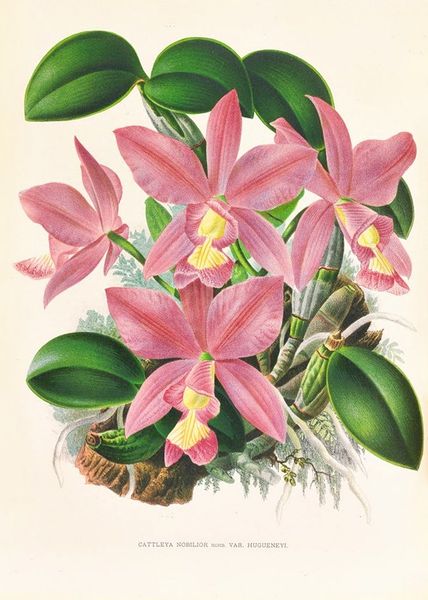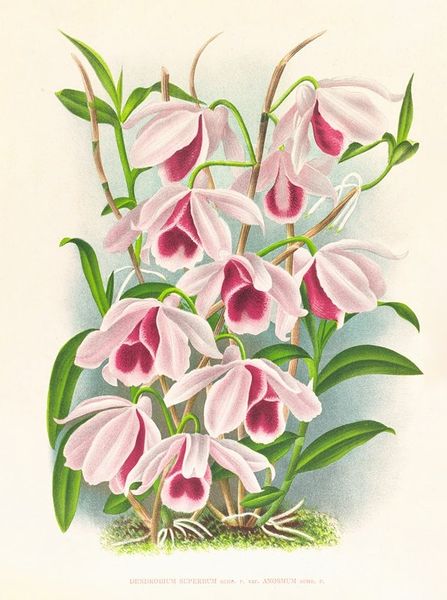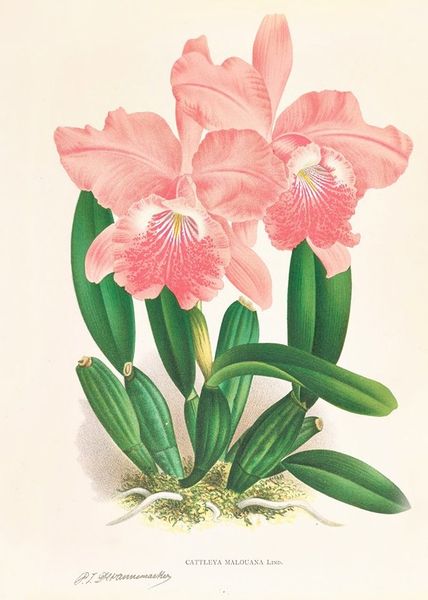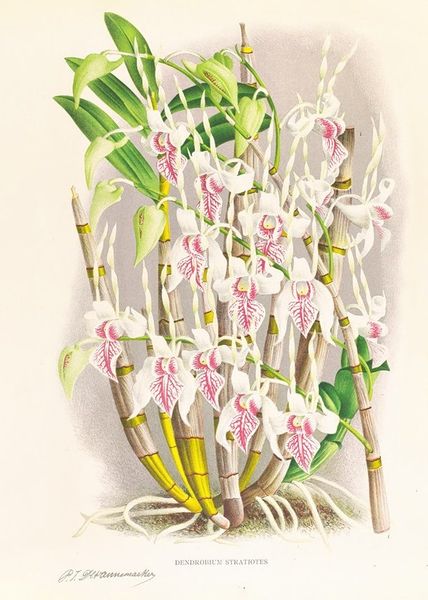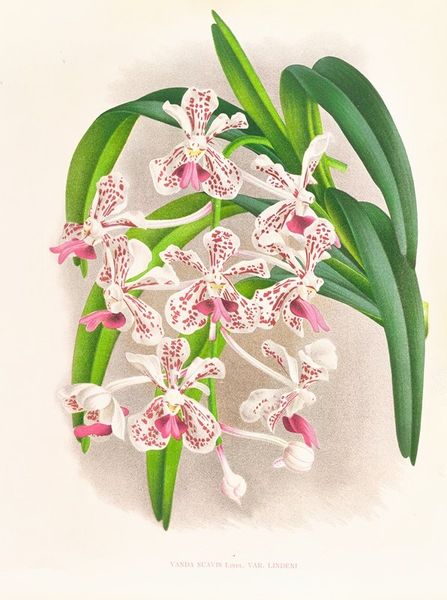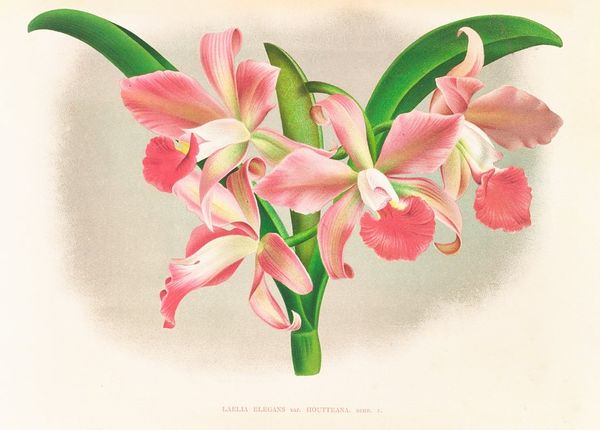
painting
#
painting
#
academic-art
Copyright: Public Domain: Artvee
Editor: This is "Cattleya maxima," a painting by Jean Jules Linden, created sometime between 1885 and 1906. It's incredibly vibrant, almost like a botanical illustration. How do you interpret this work in terms of its formal qualities? Curator: Well, considering it through a formalist lens, observe how the artist uses line and color. The delicate rendering of the petals, with their subtle gradations of pink, creates a visual harmony. The composition relies heavily on symmetry, but it's not perfect. The slightly irregular placement of the leaves and the angle of the blooms introduce a dynamic tension. Editor: I notice that contrast as well. The sharp delineation of the leaves contrasts with the softer edges of the flower petals. Was this contrast intentional? Curator: The interplay between line and mass is intentional. The botanical accuracy suggests a scientific eye, yet the aesthetic arrangement reveals the artist's subjective choices. Consider the negative space around the flower: the pale background emphasizes the positive forms and amplifies the visual impact. Editor: The way you point out the importance of negative space shifts my focus! Now I see how it directs the eye. What would you say is the focal point? Curator: It's designed to lead your gaze, isn’t it? Initially drawn to the vibrant pink of the petals, one then studies the darker foliage that stabilizes the overall structure, and finally moves toward the flower centers' fractal shapes. It's a sophisticated play with form and color. Editor: Thank you, this way of dissecting the forms and arrangement is helping me see all the layers in the art. Curator: Precisely. Formal analysis provides tools for understanding art by stripping it down to fundamental elements.
Comments
No comments
Be the first to comment and join the conversation on the ultimate creative platform.

